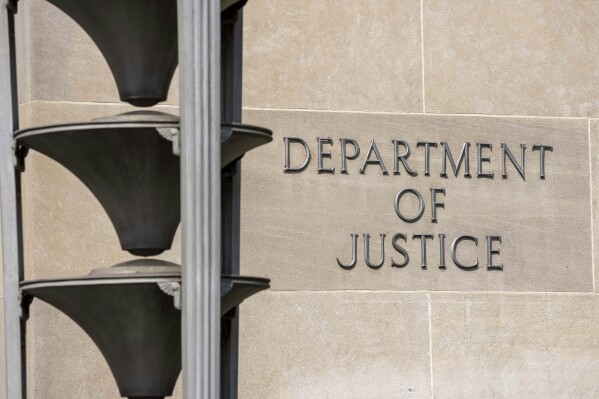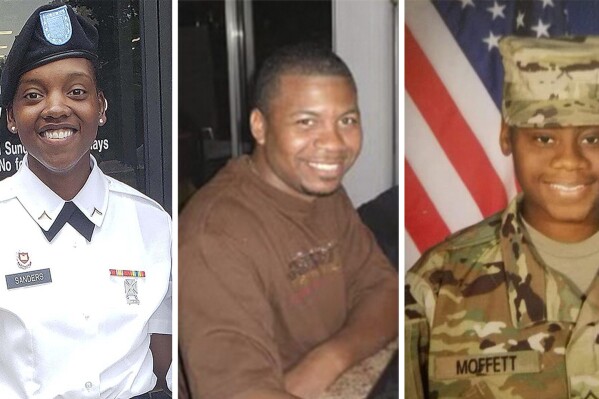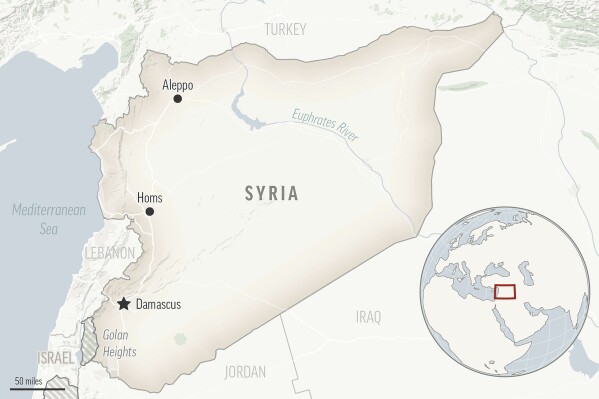How to strike back after deadly drone attack? US has many options, but must weigh consequence
WASHINGTON (AP) — President Joe Biden has made it clear the U.S. will strike back after a deadly drone attack killed three service members and wounded more than 40 at a small base in Jordan over the weekend. What isn’t yet clear is who will be hit, where, and how hard.
Biden has a wide array of options, but the U.S. must walk a fine line: A weak response will do little to deter further attacks by Iran-backed militia groups, while a major assault risks expanding the turmoil in the Middle East and drawing America into a wider conflict.
On Tuesday, Biden bluntly said “yes” when asked if he’d decided how to respond to the attack. But he provided no details, and added that the U.S. wants to avoid triggering a broader Middle East war. “That’s not what I’m looking for,” he said.
Still, the three service members are the first to be killed in militia strikes since the start of Israel’s war on Hamas in Gaza. And their deaths have triggered demands for a strong American response.



Target options range from inside Iran, including on the Islamic Revolutionary Guard Corps’ Quds Force, to Iranian ships at sea and Tehran-backed militia groups and key militant leaders in Iraq and Syria. National Security Council spokesman John Kirby raised the possibility that the U.S. will take a “tiered approach” with several actions over a period of time.
Here’s a look as some options.
DIRECT STRIKE ON IRAN
Officials across the administration have said the U.S. believes Iran bears responsibility for arming, funding and supporting the militias that have been waging an escalating campaign of drone, missile and rocket strikes on American forces in Iraq, Syria and now Jordan.
“I do hold them responsible in a sense because they’re supplying the weapons to the people who did it,.” Biden said Tuesday.
Striking inside Iran — including on the Revolutionary Guard’s Quds Force — would send a strong, direct message to Tehran.
Some argue that such a move is needed, because U.S. strikes on Iran-backed militias in recent months have not deterred them. But it also would be the riskiest move, due to worries it would inflame the militias and enrage Tehran.
Attacking Iranian assets or leaders outside the country may be more palatable. The U.S. did that in 2020, when it killed Quds Force leader Gen. Qassem Soleimani, with a drone strike in Iraq, in response to attacks on U.S. bases there and an assault on the U.S. Embassy in Baghdad.
Iran responded, launching a barrage of ballistic missiles at al-Asad air base in Iraq, injuring dozens of U.S. forces, with most suffering traumatic brain injuries.
Former Israeli intelligence official and Middle East analyst Avi Melamed said Iran has billions of dollars in military investment projects in Syria and by striking those the U.S. could punish Tehran without the escalation threat of a direct strike on Iran. One example, he said, is a large compound near Boukamal that is used for ballistic missile storage. The U.S. has previously struck facilities there in response to militia attacks.
“There is no shortage of military targets (in Syria) that the American administration can target and cause significant damage to the Iranian regime,” Melamed said.
HIT MILITIA GROUPS AGAIN
The most likely move would be to hit Iran-backed militias in Iraq and Syria again. As of Tuesday, those groups had launched 166 attacks on U.S. military installations since Oct. 18, including 67 in Iraq, 98 in Syria and now one in Jordan, according to a U.S. military official.
On Tuesday, one of the major Iran-backed militia groups, Kataib Hezbollah, announced in a statement “the suspension of military and security operations against the occupation forces” in Iraq, referring to U.S. troops. The group, which U.S. officials consider a top suspect in the Jordan attack, said the suspension was to “prevent embarrassment to the Iraqi government.”
In response, Maj. Gen. Pat Ryder, the Pentagon press secretary, said “actions speak louder than words.”
The attacks on U.S. forces have put the Iraqi government in an awkward position. Prime Minister Mohammed Shia al-Sudani was brought to power by Iranian-allied factions but he has also worked to maintain a good relationship with the U.S.
The U.S. has struck back at the militias just a handful of times since Oct. 27. On that day, U.S. fighter jets struck two weapons and ammunition storage sites in eastern Syria near Boukamal that were used by Iran’s Islamic Revolutionary Guard Corps and Iranian-backed groups. On Nov. 8, fighter jets dropped bombs on an IRGC weapons storage facility near Maysulun in Deir el-Zour. On Nov. 12, U.S. airstrikes targeted a training facility and a safe house in the Bulbul district of Mayadin. On Dec. 26, the U.S. launched strikes on three locations in Iraq used by Kataib Hezbollah and affiliated groups, and on Jan. 23, the U.S. struck three sites in Iraq, again targeting Kataib Hezbollah
CONGRESSIONAL PRESSURE
Across Capitol Hill, lawmakers are demanding retaliation.
Hawkish Congress members said Biden should directly target Tehran for the deadly attack on the base in Jordan. Sen. Lindsay Graham, R-S.C., said hitting Iranian proxies hasn’t deterred them and he called on the Biden administration “to strike targets of significance inside Iran, not only as reprisal for the killing of our forces, but as deterrence against future aggression.”
Others said the U.S. should hit the IRGC and the Quds Force, which are spread around the region.
Most, however, leaned toward restraint, saying the administration should take a strategic and thoughtful approach to avoid escalating tensions and dragging the U.S. into another war in an election year.
“Direct confrontation with Iran will certainly lead to the deaths of more U.S. service members and could easily expand into a regional conflict,” said Rep. Sara Jacobs, D-Calif., in a statement.
HOW BIG, HOW SOON?
The White House description of a “tiered approach” could suggest the response will be more than military. And it also may reflect concerns that members of the militia groups are reportedly going into hiding, which could make it more difficult for the U.S. to locate and strike senior commanders or key locations. As a result, the U.S. may need to stagger its response over days in order to better locate and refine targets.
Others argue that anything short of a major response will make the U.S. look weak.
“When they hear proportionality, reasonable, moderate, ‘we don’t want a regional war,’ that sounds so good in Davos, but our adversaries hear that as weakness and a green light for aggression,” said Bradley Bowman, a senior director at the Foundation for Defense of Democracies.
ECONOMIC SANCTIONS
A non-military option is always economic sanctions — a punishment used routinely by the Biden administration and its predecessors.
Sen. Jim Risch, the top Republican on the Senate Foreign Relations Committee, said the administration “must adopt an Iran policy focused on imposing meaningful economic and military costs on the regime.”
The U.S. could beef up sanctions aimed at cutting off the flow of funds to Iran and its proxies, particularly in Iraq. The administration has already slapped sanctions on some of the Iraqi militias — notably Kataib Hezbollah — as well as on businesses believed to be funneling dollars to the militias or to Iran.
____
Associated Press writers Farnoush Amiri, Mike Pesoli, Joshua Boak, Sagar Meghani and Kevin Freking in Washington and Abby Sewell in Beirut contributed to this report.
Disclaimer: The copyright of this article belongs to the original author. Reposting this article is solely for the purpose of information dissemination and does not constitute any investment advice. If there is any infringement, please contact us immediately. We will make corrections or deletions as necessary. Thank you.


